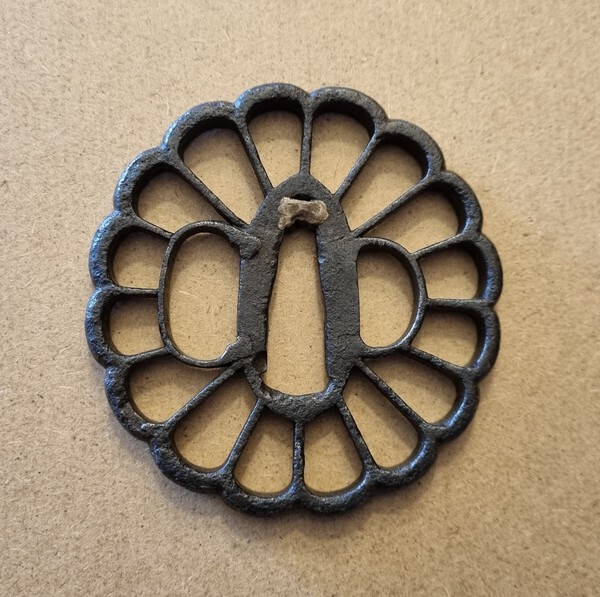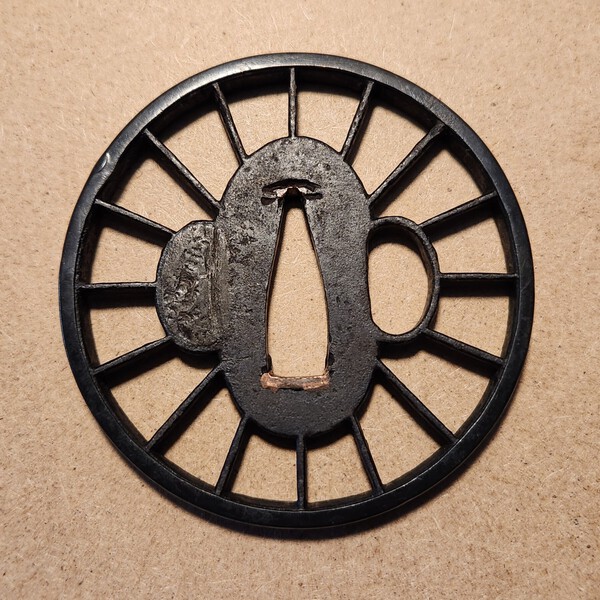-
Posts
648 -
Joined
-
Last visited
-
Days Won
3
Content Type
Profiles
Forums
Events
Store
Downloads
Gallery
Everything posted by Steves87
-
The post letter will have definitely arrived at his box by now... I'll give it until friday week to hear back either via letter or email, then I will look into more direct forms of contact. Very out of character, but I have faith he is in Japan on holiday (as he has other personal interests there), and didn't alert anyone he was going.
-
Thanks for sharing, they are unique! Maybe also share them to the Habaki thread
-
I have sent a postal letter to Dale, hopefully I get a reply.
-
Thanks again Paris, I hope this is all. I plan to send him a traditional letter this week, hopefully he responds.
-
Hi All, just wondering if anyone has heard from Dale (spartancrest) since the 22nd of Jan. I keep in fairly regular contact with him out side of the forum (almost daily) but i haven't heard from him since the 22nd of Jan. If you have heard from him or know if he was off jet-setting or something, can you please send me a pm. Thanks
-

RE: Which tsuba schools incorporate rectangular/square hitsu-ana?
Steves87 replied to Iaido dude's topic in Tosogu
-
Myochin plugs only, or can we make it an any school-Plugs thread?
-
Dan, I feel you are hugely dismissive of my opinions, on every one of my opinions. Just so you are aware, I have a background in metals technology that was started from an interest at the age of about 9yo. I have been studying Tsuba (not exclusively) since I was a teenager, and I have tried my hand at making them (with inlays) for about 5 years. I have been collecting authentic Edo Tsuba for over 10 years, and last year (2024) I spent the much of the year with the conservation department at a well known museum, as well as giving advice to history curators on related Tsuba details. I also have a formal education in curation, and I have a proven record of correct object identification through photo images. Using the correct Australian-Scillian terminology, I feel like a dick head for tooting my own horn, and ill likely never spew this out again... but I do want you to know that I am not an dumb-ass. The original Tsuba of this thread is very very very likely hand made and subsequently, accidentally, been in contact with extreme high temperatures, causing a surface transformation (either through coatings or iron impurities) which has given the appearance of melted (even cast) iron (that is why the pine needles look wierd). The areas that are missing are where this surface transformation has chipped off. Chipped off likely due to oxidisation of the 'still good' iron core. The exposed iron has since been treated to some degree... this is something I have seen on multiple occasions in the conservation departments, and when assessing acquisitions within certain museum departments. I still think you should research cast Tsuba, but start looking at the 'known examples' in all museum collections, versus the date of DONATOR acquisition.
-
-
Guys, that is clearly missing inlay... they are in the shape of shi shi !! There is no alternate construction there, just Suemon-zogan that has been lost
-
Thank Jean, that is exactly why I went for it! It is hard to see from the image, but both Hitsu-ana are added in the same way.
-
-
I am doubting the external finish is soft, but instead,very hard and brittle.... as per the info in the second half of the gpt image I shared. The Tsuba example I gave earlier in the thread is like this, some flaked off years ago and it was way harder than the iron interior, to the point that it didnt indent like iron should, but just "snapped"... i wish I had of put a magnet on it back then. Also, as per that second gpt part, it does make mention of coatings causing an encasement... take the finish look that it mentions with a grain of salt though.
-
Dan, for sure you should explore this... but do not lose sight of the knowledge that fires were very common in Edo Japan... you will need to prove that this was done purposefully (which I personally do not believe) as opposed to "accidently" caught in fire incidents (which I do believe is the case)
-
In high school many years ago we learnt about re-heating sand-iron and how it forms a shell... i forget the context of why we learnt this, and I don't care enough today to look into it further (happy new year by the way!) But a quick gpt brings up this: Click for clearer image. So it could be this too...
-
Dan, I'm not sure if this has been mentioned yet, but if you can find more cast Tsuba in museum collections and cross reference them with: donor life span, donation date, and date donor likely acquired them (by known expeditions).... you may get closer to an edo period 'confirmed' casting. There are a lot of museum collections that hold Tsuba acquired by westerners pre-1900... the major museums will likely have larger collections and better records, but there will be a ton more smaller museums which are more likely to hold cast Tsuba. Might be a wild goose chase, but you might also discover a cast Tsuba that was acquired during an expedition shortly after the mid 1880's, that eventually ended up as a museum donation.
-
I have this one with a Shakudo Fukerin... I notice there are a few others with the flat mimi in the thread... Iam wondering if a flat mimi makes the theme a Buddhist wheel, or we can still say it is Chrysanthemum?
-
I didn't say you were stupid... if you assume it was made in the Edo period though, then yes, yes I did.
-
Dan, the problem is that we knew the Tsuba was cast, we knew the theory of adverse effects, we tested the adverse affects theory and proved it... but we have no idea when the Tsuba was made... I thought the whole aim is to prove cast Tsuba were made in the Edo period? We have no idea when this Tsuba was made, and it is quite literally stupid to assume it was made in the Edo period. This test does not contribute to that discussion (cast Tsuba made in the Edo) other than reinforcing a call for further testing... which we knew all along at the beginning of the thread. P.s. I can see a cast sekigane, and the owner can in hand too
-
No, Dan, we knew the Tsuba was cast because of the cast top sekigane... that is why our bro did the test
-
Good experiment! You have definitely proved that the (mostly known) theory of tagane ato being added, will crack a cast Tsuba. However, we don't know when this Tsuba was made.... which I believe is the whole point of this thread. Is there a confirmed date for this Tsuba? I know it "looks old" but that doesn't mean it wasn't made in 1911. My father inlaw still has cast farm machinery components (used in orchard grading conveyors) made just after WW1 which look to have basically the same patina. Testing for the age of this Tsuba is the only way to prove anything for this thread... until then, we are basically still were we were on page 1. We know there are cast Tsuba, some will definitely be antiques in their own right now that we are almost in 2025... but were they made prior to the invasion of westerners, or were they made as a way of making money and producing them fast to keep up with western tourist demand? Or did the kettle makers whip a few out here and there... I would have, but different times, different cultures....
-
You don't have to believe me, but is more likely to be boiled linseed oil. It looks just like the finish on your Tsuba, and in the old days was done all the time, even on Tsuba. Do a google search of "boiled linseed oil on metal" plenty of results. There are even some threads on nmb which back this up... a user named Guido can confirm this... haven't seen him on here for a while though.
-
Not to worry, usually these ai are not good for 'scholarly' information, but they are extremely useful for conversions (e.g. language, characters, mathmatical) and program instruction, like learning the more complex features of software programs (think Excel settings and formulas). They can also be used for theme discovery (if you are cautious and properly describe the question). For example: "what is the theme of an edo period tsuba that depicts a rabbit, moon, and reeds in the context of Joly's Japanese mythology?" It may not be 100% accurate, but it will be close, and it will definitely contain clues for further research. Please experiment with it on information you know is correct, and you will very quickly see how much you can trust it for finding new leads. Part of the answer to the exact question asked is: 1. Rabbit and the Moon: In Japanese folklore, the rabbit is often associated with the moon, where it is believed to reside, endlessly pounding mochi (rice cakes). This imagery stems from the legend of the Moon Rabbit, a tale deeply rooted in Buddhist and Chinese traditions, emphasizing themes of selflessness and the cyclical nature of life.
-















